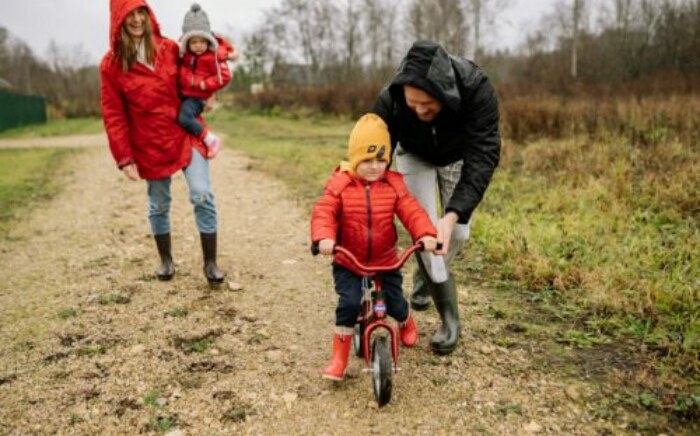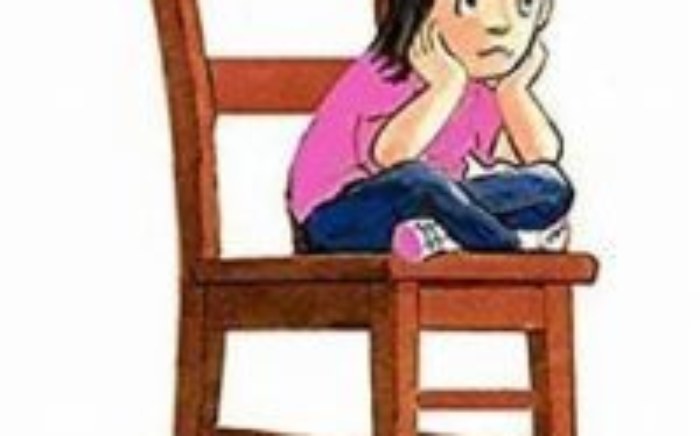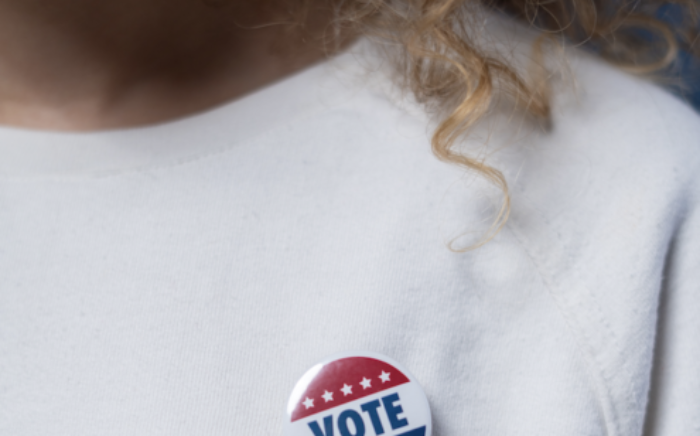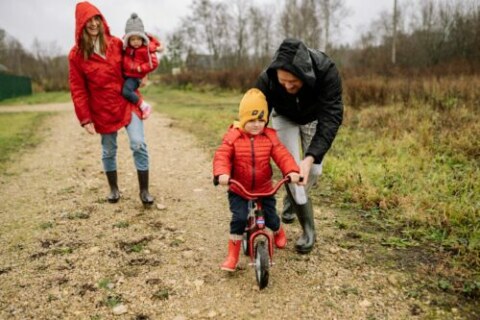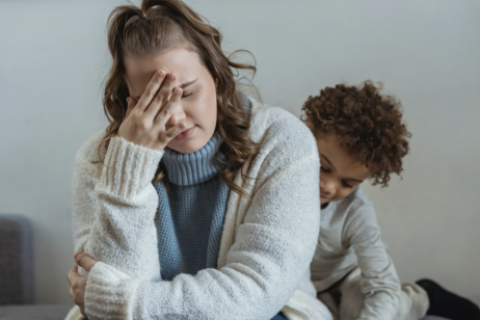October is National Bullying Prevention Month, and there is no better time to familiarize ourselves with the signs of bullying and what we can do to help. Bullying behaviors can contribute to a negative school climate in which hostile or aggressive behavior is acceptable (Gendron et al., 2011), even if it’s not directly happening to your child (Waasdorp et al., 2011). This can make bullying generally more likely to occur. It can also contribute to perceptions that teachers and other adults at school are not trustworthy, caring, or able to help when needed (Thapa et al., 2013). Here are some things to be aware of, in terms of understanding what bullying is, what steps you can take to address it, and how you can help protect your child from bullying (or help your child stand up for others who are being bullied).
What is bullying?
Bullying can come in many forms (Wang et al., 2009). At its core, it is any unwanted behavior that happens repeatedly over time and involves a power imbalance between children (Olweus, 1997). Power imbalances can occur when there is a significant difference in age, physical size or strength, popularity or social status, or access to potentially embarrassing or private information.
- Physical bullying: hitting or kicking, spitting, shoving or tripping, stealing or destroying someone’s things, negative hand gestures, etc.
- Verbal bullying: teasing, taunting, name-calling, threatening or intimidation, making inappropriate sexual comments, etc.
- Social or relational bullying: intentionally excluding others, spreading rumors, telling other kids not to be friends with someone, publicly embarrassing someone, etc.
- Cyberbullying: digital harassment by posting or sharing negative or private information about someone else through messaging apps or social media (e.g., Facebook, Instagram, Snapchat, Twitter, Tik Tok), sending negative text messages or emails, embarrassing someone on online forums (e.g., Reddit) or online gaming platforms, etc.
Although physical bullying tends to receive the most attention, all forms of bullying can have serious long-term implications for victims, aggressors, and even witnesses to bullying. These include depression, anxiety, low self-esteem, suicidal thoughts and behaviors, alcohol or substance use, academic impairments, and other risk behaviors (Hawker & Boulton, 2000; Bowes et al., 2010).
Bullying does not only happen on school premises or during school hours. It can also happen on the way to or from school (e.g., school bus, subway, walking routes), in the neighborhood or other shared community spaces (e.g., religious venues), on the Internet (see Cyberbullying), and on the playground or other places where adult supervision is less possible.
Despite the misconception that bullying only happens to children who are more socially vulnerable, bullying can happen even to children who have many friends (Sawyer et al., 2011). At times, aggressors may also be friends within a child’s own peer group (Holt & Espelage, 2007).
What can parents do?
You can make a report to your child’s school or file a complaint with the school district. Any incident of harassment, intimidation, or bullying must be investigated by the school, in order to ensure that appropriate steps are being taken to end the bullying and remedy the situation. This is especially true, if the bullying is discriminatory against a child’s race/ethnicity, national origin, skin color, sex, sexual orientation, gender identity, age, disability, or religion. LGBTQ+ youth are at increased risk for bullying and generally report more bullying and related safety concerns, as compared to heterosexual/straight or cis-gender youth (Birkett, Espelage, & Koenig, 2009).
Adult intervention is necessary and important, as children may not feel there is a point in reporting bullying if it goes unaddressed for themselves or others (Mischel & Kitsantas, 2020). Teachers can also increase supervision and monitoring to ensure that bullying does not continue to happen at school. Encouraging your child to speak up about bullying can help prevent it from reoccurring, and it can allow you to help your child to make a plan to cope ahead for future incidents.
What can my child do?
- Act confident (even if they don’t feel confident), and tell the child who is bullying them to stop. It may be helpful to brainstorm different ways of stating this with your child, and role-play different scenarios.
- Use humor! Laugh it off or joke, if using an easy manner works for your child.
- If your child is not able to speak up due to fear or safety concerns, they can walk away and/or find an adult to help intervene. Your child should not fight back.
- Stay close to other kids and adults, as bullying is less likely to happen in the presence of a supervising adult.
- Talk to someone! It is important to get support from friends, family, and/or a professional as needed.
- Stand up for others who are being bullied! If you feel unable to speak up due to fear or safety concerns, offer support privately to the person who is being bullied. This can mean a lot for the child who is being bullied and can contribute to a more positive school environment overall.
References
Birkett, M., Espelage, D. L., & Koenig, B. (2009). LGB and questioning students in schools: The moderating effects of homophobic bullying and school climate on negative outcomes. Journal of Youth and Adolescence,38(7), 989–1000. https://doi-org.proxy.libraries.rutgers.edu/10.1007/s10964-008-9389-1.
Bowes, L., Maughan, B., Caspi, A., Moffitt, T. E., & Arseneault, L. (2010). Families promote emotional and behavioural resilience to bullying: Evidence of an environmental effect. Journal of Child Psychology and Psychiatry,51(7), 809–817. https://doi-org.proxy.libraries.rutgers.edu/10.1111/j.1469-7610.2010.02216.x.
Gendron, B., Williams, K., & Guerra, N. (2011). An analysis of bullying among students within schools: Estimating the effects of individual normative beliefs, self-esteem, and school climate. Journal of School Violence,10(2), 150–164. https://doi-org.proxy.libraries.rutgers.edu/10.1080/15388220.2010.539166.
Hawker, D., & Boulton, M. (2000). Twenty years’ research on peer victimization and psychosocial maladjustment: A meta-analytic review of cross-sectional studies. Journal of Child Psychology and Psychiatry,41(4), 441–455. https://doi-org.proxy.libraries.rutgers.edu/10.1017/s0021963099005545.
Holt, M., & Espelage, D. (2007). Perceived social support among bullies, victims, and bully-victims. Journal of Youth and Adolescence,36(8), 984–994. https://doi-org.proxy.libraries.rutgers.edu/10.1007/s10964-006-9153-3.
Mischel, J., Kitsantas, A. Middle school students’ perceptions of school climate, bullying prevalence, and social support and coping. Social Psychology of Education, 23, 51–72 (2020). https://doi-org.proxy.libraries.rutgers.edu/10.1007/s11218-019-09522-5
Olweus, D. (1997). Bully/victim problems in school: Facts and intervention. European Journal of Psychology of Education,12(4), 495–510. https://doi-org.proxy.libraries.rutgers.edu/10.1007/bf03172807.
Sawyer, J., Mishna, F., Pepler, D., & Wiener, J. (2011). The missing voice: Parents’ perspectives of bullying. Children and Youth Services Review,33(10), 1795–1803. https://doi-org.proxy.libraries.rutgers.edu/10.1016/j.childyouth.2011.05.010.
Thapa, A., Cohen, J., Guffey, S., & Higgins-D’Alessandro, A. (2013). A review of school climate research. Review of Educational Research,83(3), 357–385. https://doi-org.proxy.libraries.rutgers.edu/10.3102/0034654313483907.
Waasdorp, T., Pas, E., O’Brennan, L., & Bradshaw, C. (2011). A multilevel perspective on the climate of bullying: Discrepancies among students, school staff, and parents. Journal of School Violence,10(2), 115–132. https://doi-org.proxy.libraries.rutgers.edu/10.1080/15388220.2010.539164.
Wang, J., Iannotti, R., & Nansel, T. (2009). School bullying among adolescents in the United States: Physical, verbal, relational, and cyber. Journal of Adolescent Health,45(4), 368–375. https://doi-org.proxy.libraries.rutgers.edu/10.1016/j.jadohealth.2009.03.021.


